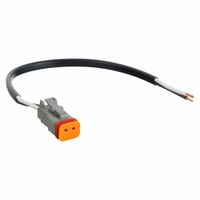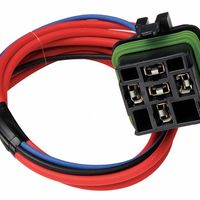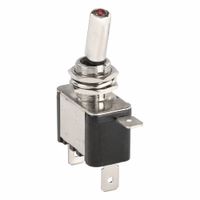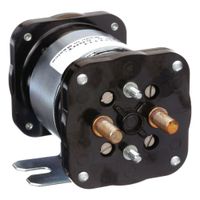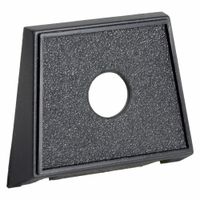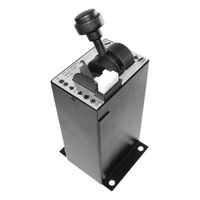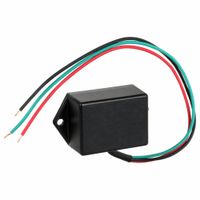Call +(254) 703 030 000 / 751 483 999 / 721 704 777
Vehicle Wiring
Vehicle wiring systems transfer electrical current from one automotive component to another. Automotive switches open or close the electrical current running from the battery to electronic devices or systems inside and outside the vehicle. Vehicle flasher relays and turn signal switches help repair .....Read More
Frequently Asked Questions
What is the function of a vehicle wiring system?
The function of a vehicle wiring system is to serve as the electrical backbone of the vehicle, facilitating the distribution and management of electrical power and signals throughout the vehicle. It connects various electrical and electronic components, enabling them to function properly and interact with each other. The wiring system includes a network of wires, connectors, fuses, and relays that ensure the safe and efficient operation of the vehicle's electrical systems.
Key functions include:
1. **Power Distribution**: The wiring system distributes electrical power from the battery and alternator to various components such as the ignition system, lights, infotainment systems, and other electronic devices.
2. **Signal Transmission**: It transmits signals between different parts of the vehicle, such as from sensors to the engine control unit (ECU) or from the driver controls to the respective actuators.
3. **Safety and Protection**: The system incorporates fuses and circuit breakers to protect against electrical overloads and short circuits, preventing damage to components and reducing the risk of fire.
4. **Control and Communication**: Modern vehicles use complex wiring systems to support communication networks like CAN (Controller Area Network) bus, allowing different electronic control units (ECUs) to communicate and coordinate functions such as engine management, transmission control, and safety systems.
5. **Integration of Advanced Features**: The wiring system supports the integration of advanced features such as navigation systems, advanced driver-assistance systems (ADAS), and connectivity solutions, enhancing the vehicle's functionality and user experience.
Overall, the vehicle wiring system is crucial for the reliable operation of the vehicle, ensuring that all electrical components work harmoniously and efficiently.
How do automotive switches work?
Automotive switches are essential components in vehicles, used to control various electrical systems and functions. They operate by opening or closing electrical circuits, allowing or interrupting the flow of electricity to different components. Here's how they work:
1. **Basic Principle**: At their core, automotive switches are simple devices that either connect or disconnect electrical circuits. When a switch is turned on, it closes the circuit, allowing current to flow through and power the connected device. Conversely, turning the switch off opens the circuit, stopping the flow of electricity.
2. **Types of Switches**: There are several types of automotive switches, including toggle, rocker, push-button, rotary, and slide switches. Each type has a specific mechanism for opening and closing circuits. For example, a toggle switch uses a lever that moves up or down, while a push-button switch is activated by pressing a button.
3. **Applications**: Automotive switches are used for various applications, such as controlling headlights, windshield wipers, power windows, and ignition systems. Each switch is designed to handle specific voltage and current levels, ensuring safe and efficient operation.
4. **Construction**: Most automotive switches consist of a housing, contacts, and an actuator. The housing protects the internal components, while the contacts are conductive materials that open or close the circuit. The actuator is the part of the switch that the user interacts with, such as a button or lever.
5. **Safety and Durability**: Automotive switches are designed to withstand harsh conditions, including temperature fluctuations, vibrations, and exposure to moisture and dust. They are often made from durable materials like plastic or metal and may include features like waterproof seals or dust covers.
6. **Integration with Modern Systems**: In modern vehicles, switches are often integrated with electronic control units (ECUs) and can be part of complex systems like infotainment or climate control, allowing for more advanced functionalities and diagnostics.
What is the purpose of a flasher relay in a vehicle?
A flasher relay in a vehicle is an essential component of the turn signal system, designed to control the operation of the vehicle's indicator lights. Its primary purpose is to regulate the on-off cycling of the turn signal lights, ensuring they flash at a consistent and recognizable rate. This flashing alerts other drivers and pedestrians to the vehicle's intended direction of travel, enhancing safety on the road.
The flasher relay works by interrupting the electrical current flowing to the turn signal bulbs, causing them to blink on and off. It typically consists of a bimetallic strip or an electronic circuit that heats up and cools down, opening and closing the circuit at regular intervals. This process creates the familiar clicking sound associated with turn signals.
In addition to controlling the turn signals, the flasher relay may also manage the hazard lights, which are used to indicate a stationary vehicle or an emergency situation. The relay ensures that all four indicator lights flash simultaneously when the hazard lights are activated.
Modern vehicles often use electronic flasher relays, which provide more precise control over the flash rate and are less susceptible to wear and tear compared to older mechanical versions. These electronic relays can also accommodate the use of LED bulbs, which have different electrical characteristics than traditional incandescent bulbs.
Overall, the flasher relay is a critical component for vehicle safety, ensuring that turn signals and hazard lights function reliably to communicate the driver's intentions to others on the road.
How do you repair or replace vehicle wiring for lights?
To repair or replace vehicle wiring for lights, follow these steps:
1. **Safety First**: Disconnect the vehicle's battery to prevent electrical shock or short circuits.
2. **Identify the Problem**: Use a multimeter to check for continuity and voltage in the wiring. Inspect for visible damage like frayed wires, corrosion, or burnt sections.
3. **Access the Wiring**: Remove any panels or covers to access the wiring harness. This may involve removing headlight or taillight assemblies.
4. **Repairing Wiring**:
- **Splicing**: If the wire is damaged but not completely severed, cut out the damaged section. Strip the insulation from the ends of the wires, twist them together, and solder for a secure connection. Cover with heat shrink tubing or electrical tape.
- **Connector Issues**: Clean corroded connectors with electrical contact cleaner. Replace connectors if they are damaged.
5. **Replacing Wiring**:
- **Remove Old Wiring**: Carefully trace and remove the damaged wire from the harness. Note the routing and connections.
- **Install New Wiring**: Cut a new wire to the appropriate length. Strip the ends and connect using solder or crimp connectors. Ensure the wire gauge matches the original.
- **Secure the Wiring**: Use zip ties or clips to secure the new wire along the original path, avoiding moving parts or heat sources.
6. **Test the Repair**: Reconnect the battery and test the lights to ensure proper operation.
7. **Reassemble**: Once confirmed, reassemble any removed parts and ensure all connections are secure.
8. **Final Check**: Perform a final test of the lights and inspect for any signs of malfunction.
Always refer to the vehicle's service manual for specific instructions and wiring diagrams.
What is an automotive harness and how is it used?
An automotive harness, also known as a wiring harness, is an organized set of wires, terminals, and connectors that run throughout a vehicle to relay information and electrical power. It is designed to connect various components of the vehicle's electrical system, such as lights, sensors, ignition systems, and other electronic devices, ensuring they function properly.
The harness is typically made up of multiple wires bundled together, each with a specific function, and is often wrapped in a protective sheath to prevent damage from heat, moisture, and abrasion. The wires are color-coded and labeled to facilitate easy identification and troubleshooting.
In use, the automotive harness serves several critical functions:
1. **Power Distribution**: It distributes electrical power from the battery and alternator to various components, ensuring they receive the necessary voltage to operate.
2. **Signal Transmission**: It transmits signals between different parts of the vehicle, such as from sensors to the engine control unit (ECU), enabling the vehicle to monitor and adjust its performance.
3. **Safety and Control**: It integrates with safety systems like airbags and anti-lock braking systems (ABS), ensuring they activate correctly in emergencies.
4. **Convenience Features**: It connects to features like power windows, central locking, and infotainment systems, enhancing the vehicle's functionality and user experience.
5. **Customization and Modularity**: Modern harnesses are designed to accommodate additional features and upgrades, allowing for customization and modularity in vehicle design.
Overall, the automotive harness is a crucial component that ensures the seamless operation of a vehicle's electrical and electronic systems, contributing to its safety, efficiency, and comfort.
How do relay sockets control energy flow in a vehicle?
Relay sockets control energy flow in a vehicle by serving as the interface between the vehicle's electrical system and the relays themselves. Relays are electrically operated switches that allow a low-power circuit to control a high-power circuit, which is essential for managing the vehicle's electrical components efficiently.
1. **Activation**: When a low-power signal is sent from a control switch or electronic control unit (ECU), it energizes the coil within the relay. This creates a magnetic field that pulls a switch contact to close the circuit.
2. **Switching**: The closing of the relay contacts allows a higher current to flow through the relay's output circuit. This high-power circuit can then power components such as headlights, fuel pumps, or cooling fans without the need for heavy-duty wiring to the control switch.
3. **Protection**: Relay sockets provide a secure and organized way to connect relays to the vehicle's wiring harness. They help prevent loose connections and protect the relay terminals from environmental factors like moisture and dust, which could cause short circuits or corrosion.
4. **Modularity**: Relay sockets allow for easy replacement and maintenance of relays. If a relay fails, it can be quickly swapped out without the need for rewiring, minimizing downtime and simplifying repairs.
5. **Efficiency**: By using relays, the vehicle's electrical system can operate more efficiently. Relays reduce the load on switches and control units, preventing overheating and extending the lifespan of these components.
Overall, relay sockets are crucial for managing the distribution and control of electrical power in a vehicle, ensuring that high-power components operate safely and efficiently while protecting the vehicle's electrical system from potential damage.
What are face plates and mounting panels used for in automotive wiring?
Face plates and mounting panels are essential components in automotive wiring systems, serving both functional and aesthetic purposes.
Face plates are typically used to cover and protect electrical outlets, switches, and connectors within a vehicle. They provide a neat and organized appearance, ensuring that the wiring and connections are not exposed to the vehicle's interior environment, which could lead to damage or short circuits. Face plates also help in preventing accidental disconnection or tampering with the wiring components, thereby enhancing safety and reliability.
Mounting panels, on the other hand, serve as a structural base for securing various electrical components and wiring harnesses within the vehicle. They provide a stable and organized platform for mounting switches, relays, fuses, and other electrical devices. By keeping these components securely in place, mounting panels help in reducing vibrations and movement that could lead to wear and tear or disconnection over time. This stability is crucial in maintaining the integrity and performance of the vehicle's electrical system.
Both face plates and mounting panels contribute to the ease of maintenance and troubleshooting. By organizing and securing the wiring and components, they allow technicians to quickly identify and access specific parts of the electrical system for repairs or upgrades. This organization also aids in efficient heat dissipation, reducing the risk of overheating and potential electrical failures.
In summary, face plates and mounting panels are vital for protecting, organizing, and securing automotive wiring systems, ensuring safety, reliability, and ease of maintenance.
